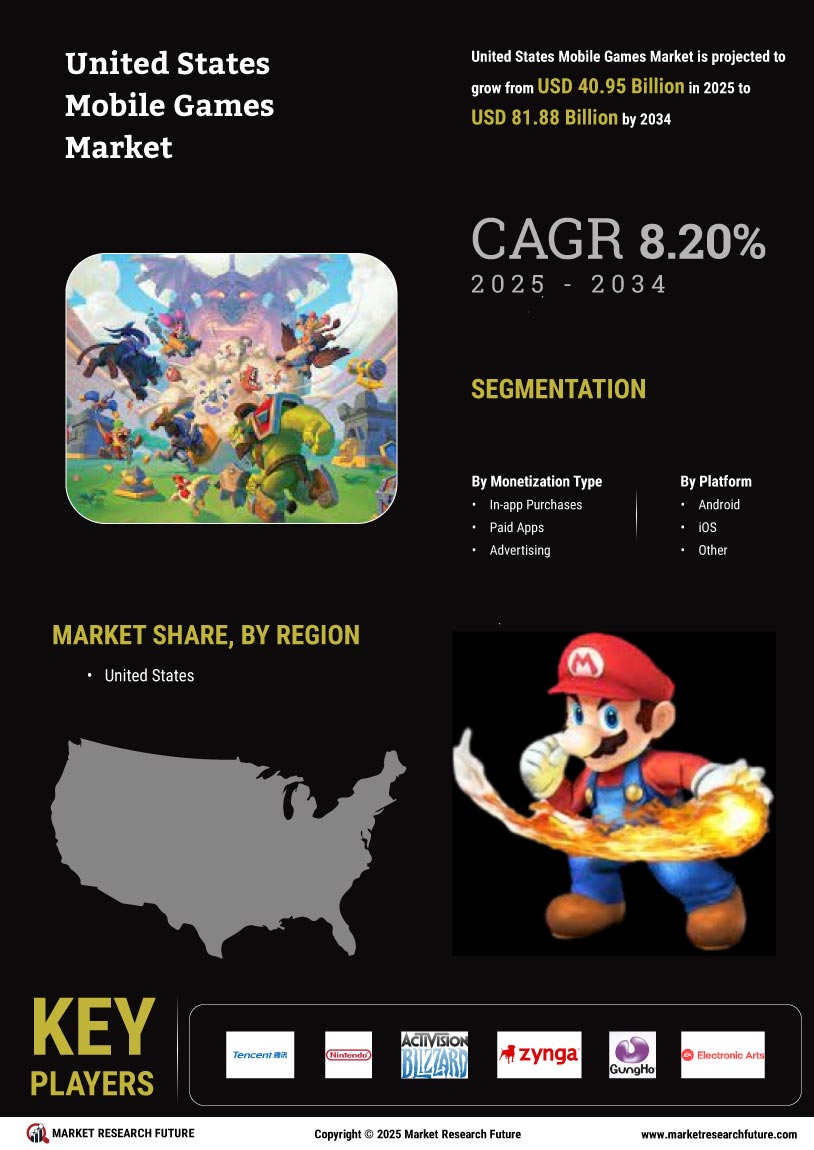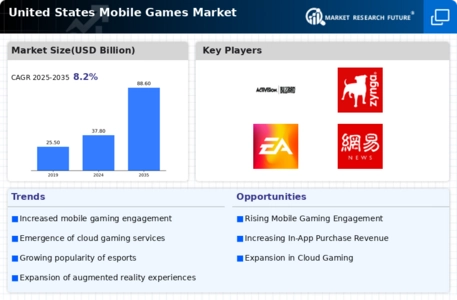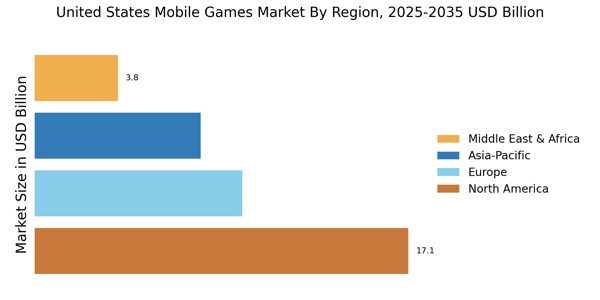The United States Mobile Games Market is characterized by a dynamic competitive landscape, driven by rapid technological advancements and evolving consumer preferences. Major players such as Activision Blizzard (US), Electronic Arts (US), and Zynga (US) are at the forefront, each adopting distinct strategies to enhance their market positioning. Activision Blizzard (US) focuses on leveraging its strong intellectual property portfolio, particularly in the realm of multiplayer gaming, while Electronic Arts (US) emphasizes the integration of live services and community engagement to foster player loyalty. Zynga (US), on the other hand, is concentrating on expanding its mobile gaming portfolio through strategic acquisitions and partnerships, thereby enhancing its reach and operational capabilities. Collectively, these strategies contribute to a competitive environment that is increasingly characterized by innovation and consumer-centric approaches.
The business tactics employed by these companies reflect a nuanced understanding of the market's structure, which is moderately fragmented yet dominated by a few key players. Localizing content and optimizing supply chains are critical tactics that enhance operational efficiency and responsiveness to market demands. The collective influence of these major players shapes the competitive dynamics, as they continuously adapt to the shifting landscape of mobile gaming, which is marked by the increasing importance of user engagement and retention strategies.
In September 2025, Activision Blizzard (US) announced a significant partnership with a leading cloud gaming service to enhance its mobile gaming offerings. This strategic move is poised to expand its reach into new demographics, particularly among casual gamers who prefer cloud-based access. By integrating its popular franchises into this platform, Activision Blizzard (US) aims to capitalize on the growing trend of cloud gaming, thereby positioning itself as a leader in this emerging segment.
In August 2025, Electronic Arts (US) launched a new initiative focused on sustainability within its mobile gaming operations. This initiative includes the implementation of eco-friendly practices in game development and distribution, reflecting a growing consumer demand for corporate responsibility. By prioritizing sustainability, Electronic Arts (US) not only enhances its brand image but also aligns itself with the values of an increasingly environmentally conscious player base, potentially driving higher engagement and loyalty.
In July 2025, Zynga (US) completed the acquisition of a prominent mobile game developer, significantly bolstering its portfolio and market presence. This acquisition is strategically important as it allows Zynga (US) to diversify its offerings and tap into new gaming genres, thereby attracting a broader audience. The integration of this new developer's expertise and IP is expected to enhance Zynga's competitive edge in the mobile gaming sector, particularly in the face of intensifying competition.
As of October 2025, the competitive trends within the mobile games market are increasingly defined by digitalization, AI integration, and a focus on sustainability. Strategic alliances are becoming more prevalent, as companies recognize the value of collaboration in navigating the complexities of the market. Looking ahead, competitive differentiation is likely to evolve, shifting from traditional price-based competition to a focus on innovation, technological advancements, and supply chain reliability. This transition underscores the necessity for companies to not only adapt to current trends but also anticipate future consumer demands in an ever-evolving landscape.


















Leave a Comment